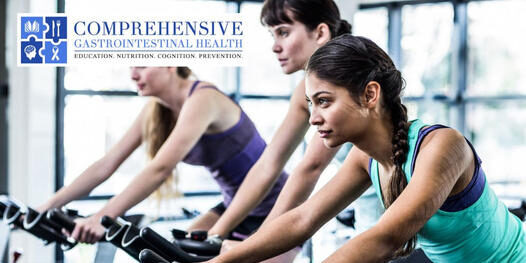A Little Goes a Long Way with 4-Second Interval Training
A Little Goes a Long Way with 4-Second Interval Training
by Julie Adams, RD
No time to exercise? Research out of the University of Texas-Austin’s Human Performance Laboratory shows that short bursts of activity are far better than doing nothing at all. Researchers found that 4-second high-intensity intervals repeated over 15 minutes promoted positive health outcomes for people at all fitness levels.
High Intensity Interval Training
Most of us have heard of High Intensity Interval Training (HIIT), or repeated cycles of short, vigorous activity followed by lower-intensity recovery periods. We have good quality evidence that HIIT improves aerobic fitness, strength and body composition. For instance, a meta-analysis of more than 786 HIIT studies in The British Journal of Sports Medicine, concludes that HIIT is a superior way to decrease body fat, providing “28.5% greater reductions in total absolute fat mass than moderate intensity continuous training.”
In general, high intensity intervals reach 80 – 95% of maximum heart rate, with the low-intensity recovery period falling to about 60 – 65% of maximum heart rate. (Simply subtract your age from 220 to estimate maximum heart rate.) The type of exercise, interval and total exercise duration can be adapted to individual fitness levels. Activities such as walking/jogging, exercise machines, stair-climbing, jumping jacks, sit-ups, push-ups, or squats all count! Remember to always check with your doctor before embarking on any exercise regimen.
The 4-Second High Intensity Interval
A team of kinesiologists from the University of Texas wondered if a much shorter high- intensity interval would still counteract the negative consequences of sedentary behavior. After recruiting middle-aged, unfit males and females, they demonstrated that 4-second “all-out” sprints on a resistance exercise bike, repeated 15-30 times over 15 minutes, significantly improved cardiovascular fitness and muscle mass. Further, the exercisers metabolized fat much better the next day, compared with all-day sitting without exercise, notes Edward Coyle, Ph.D., and head of UT’s Human Performance Laboratory.
In a follow-up study, Coyle and his team decided to recruit younger, fitter males and females to see if they would also benefit. Participants fully exerted themselves for thirty 4-second intervals, each followed by periods of rest, for a total of 2 minutes at the high interval. They did this three times per week for eight weeks, without performing other forms of exercise. By the end of the study, the younger and fitter participants were able to add an average 13% to their VO2 max (an aerobic fitness measure) and 17% to their muscular power, measured by how many watts they produced while pedaling their bikes.
Take Home Message
With doctor approval, most people have an opportunity to counteract the metabolic and physiological damage promoted by long hours of sitting. Find ways to get up and move throughout the day. If you can, take it to the next level with multiple 4-second intervals climbing stairs, speed walking, or simply jumping up and down. A little added aerobic intensity goes a long way
Knowledge in Action
-
- Don’t give up on exercise if you are short on time.
- Check with your doctor and choose an exercise you enjoy and is most convenient. Try a rotation of 2 or 3 different types if you can. You might consider biking, running, stair-climbing, jumping rope, squat jumps, speed walking or swimming.
- Perform the exercise “all out” for 4 seconds and then take 15-30 seconds to recover. Repeat at least 15 times over 15 minutes.
- Get maximum benefit by interspersing your day with brief bursts of exercise. Sitting for long hours at a time contributes to poor metabolic health.
We have a fantastic team of doctors, registered dietitians, nurse practitioners, a physical therapist and behavioral health counselor to help you meet your health and fitness goals. MANY OF THESE SERVICES ARE LIKELY TO BE COVERED BY INSURANCE. Please call us at 224-407-4400 or email [email protected] for more information.

